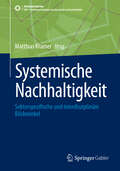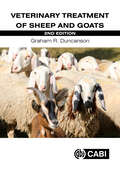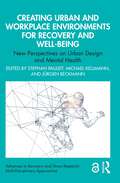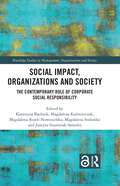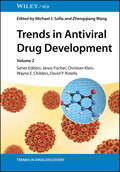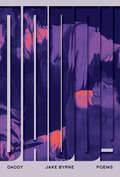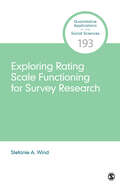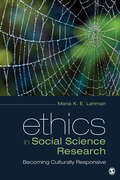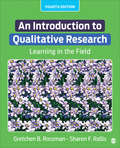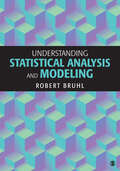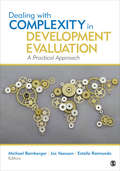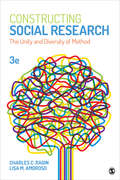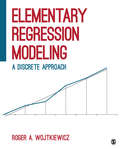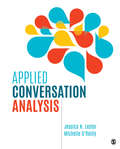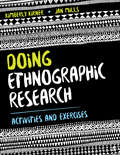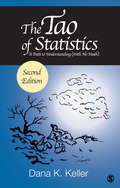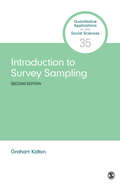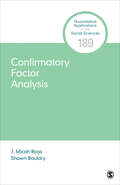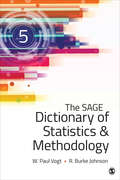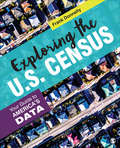- Table View
- List View
Systemische Nachhaltigkeit: Sektorspezifische und interdisziplinäre Blickwinkel (SDG - Forschung, Konzepte, Lösungsansätze zur Nachhaltigkeit)
by Matthias KramerDie Auswirkungen des Klimawandels sind längst mehr als nur ein gefühltes Phänomen. Sie zeigen sich weltweit mit zunehmender regionaler Intensität. Deutschland ist aktuell besonders von Starkregenereignissen mit Überschwemmungskatastrophen und Dürreperioden mit massiven Waldschäden betroffen. Die notwendige Reduzierung klimarelevanter Emissionen artikuliert sich u. a. in Maßnahmen zur Verkehrswende, Bau- und Infrastrukturwirtschaft, Landwirtschaft und zum Konsumentenverhalten. Zielkonflikte, wie beim Übergang vom fossilen Zeitalter zu Erneuerbaren Energien und von weniger Globalisierung zu mehr Regionalisierung, gilt es durch eine simultane Planung von Klima-, Umwelt- und Naturschutz wirtschaftswissenschaftlich orientiert zu managen. Dieser Anspruch und die Fokussierung auf mehrere SDGs im Rahmen der nachhaltigen Entwicklung stellen die fachlichen Schnittstellen zwischen den Buchbeiträgen dar. Das Buch richtet sich an Studierende, Wissenschaftler, politische Entscheidungsträger und Praktiker, die sich mit Nachhaltigkeitsthemen sowie den interdisziplinären Auswirkungen des Klimawandels befassen.
Veterinary Treatment of Sheep and Goats
by Dr Graham R DuncansonSheep and goats are farmed worldwide for meat, milk, skins and wool. This diverse range of uses means that many people rely on these animals as a source of income, food and warm clothing, though they can also be kept as pets. With an accessible structure designed for use in the field, this book provides a general veterinary guide to treating common conditions in these animals. Fully updated in this new edition, it addresses veterinary medicines and their uses, on-site surgery, equipment, normal values and vital signs, vaccination, nutrition, dental treatment, poisoning and dermatology. Worldwide disease conditions are also covered in detail, with a particular focus on the welfare of the animal and economic reality.
Creating Urban and Workplace Environments for Recovery and Well-being: New Perspectives on Urban Design and Mental Health (Advances in Recovery and Stress Research)
by Stephan Pauleit Michael Kellmann Jürgen BeckmannThis essential book offers suggestions for how cities and spaces can be planned and designed to reduce the impact of stress, provide opportunities for recovery, and promote the resilience of individuals in urban communities.Connecting research from different scientific disciplines, the book provides a broader perspective of creating healthy lifestyle in society. It focuses on mental health and well-being by exploring how urban and workplace environments can be created to enhance and promote recovery. Divided into three parts, the book begins by investigating the multi-dimensional challenges of planning and design for stress reduction and recovery in urban areas. Part 2 concentrates on the design of residential and working environments, including commuting between the two, while Part 3 considers how neighbourhoods and entire cities contribute to or obstruct stress reduction, recovery, and well-being. The book concludes by demonstrating how the insights from the book can be implemented in practice to create restorative and inclusive environments. Bringing together leading experts, the book offers an interdisciplinary perspective for increasing well-being in urban developments.The book will be of interest to researchers and practitioners in related fields, including environmental psychologists, urban planners, architects and landscape architects, healthcare staff, and policymakers.
Social Impact, Organizations and Society: The Contemporary Role of Corporate Social Responsibility (Routledge Studies in Management, Organizations and Society)
by Magdalena Stefańska Katarzyna Bachnik Magdalena Kaźmierczak Magdalena Rojek-Nowosielska Justyna Szumniak-SamolejSocial Impact, Organizations and Society represents endeavors to comprehensively explore the essence of social impact. The editors aim to elucidate its definition, scope, measurement and implementation. Delving into how organizations integrate social impact into their core missions, decision-making processes and operational frameworks, this monograph strives to identify avenues for enhancing social impact generation. Furthermore, its focus lies on fostering effective relationships with diverse stakeholder groups and providing empirical evidence of social impact practices across industries and sectors. Through an in-depth examination of the latest research, this monograph sheds light on the evolving role of corporate social responsibility and its significance amidst contemporary challenges.Chapters 1, 3, 4, 5, 6, 11 and 14 of this book are freely available as a downloadable Open Access PDF at http://www.taylorfrancis.com under a Creative Commons Attribution-Non Commercial-No Derivatives (CC-BY-NC-ND) 4.0 license.
Trends in Antiviral Drug Development (Trends in Drug Discovery)
by David P. Rotella Wayne E. Childers János Fischer Christian KleinHard-to-find insights from industry professionals on success strategies for developing the next generation of antiviral blockbuster drugs Presented by industry professionals with a track record of discovering new drugs and treatments, Trends in Antiviral Drug Development describes successful development efforts for antiviral compounds and therapies that have entered the market or are currently in clinical trials. Viruses are ordered by their target tissue, in line with contemporary drug development that focuses on tissue-targeted therapeutics. Other key trends in antiviral therapy, such as the effort to develop long-acting drugs, are described for each virus type, enabling readers to follow the current and future state in this core area of contemporary drug development. Trends in Antiviral Drug Development includes discussion on: Novel drugs against herpes viruses as well as the breakthrough drugs that cured HCVsiRNA therapeutics, a new antiviral modality, and the drug candidates that are progressing toward achieving an HBV cureDrugs targeting viral entry, such as in HIV entry through attachment, co-receptor binding, and fusionNovel therapeutics against tropical diseases such as dengue fever and monkey pox Trends in Antiviral Drug Development is an essential read for medicinal chemists, pharmaceutical chemists, virologists, and all professionals seeking to understand new ideas and approaches to combat the ever-expanding universe of viral infections.
Mastering Linux Security and Hardening: A practical guide to protecting your Linux system from cyber attacks, 3rd Edition
by Donald A. TevaultGain a firm practical understanding of how to secure your Linux system from intruders, malware attacks, and other cyber threatsPurchase of the print or Kindle book includes a free eBook in PDF format.Key FeaturesDiscover security techniques to prevent malware from infecting a Linux system, and detect itPrevent unauthorized people from breaking into a Linux systemProtect important and sensitive data from being revealed to unauthorized personsBook DescriptionThe third edition of Mastering Linux Security and Hardening is an updated, comprehensive introduction to implementing the latest Linux security measures, using the latest versions of Ubuntu and AlmaLinux.In this new edition, you will learn how to set up a practice lab, create user accounts with appropriate privilege levels, protect sensitive data with permissions settings and encryption, and configure a firewall with the newest firewall technologies. You'll also explore how to use sudo to set up administrative accounts with only the privileges required to do a specific job, and you'll get a peek at the new sudo features that have been added over the past couple of years. You'll also see updated information on how to set up a local certificate authority for both Ubuntu and AlmaLinux, as well as how to automate system auditing. Other important skills that you'll learn include how to automatically harden systems with OpenSCAP, audit systems with auditd, harden the Linux kernel configuration, protect your systems from malware, and perform vulnerability scans of your systems. As a bonus, you'll see how to use Security Onion to set up an Intrusion Detection System.By the end of this new edition, you will confidently be able to set up a Linux server that will be secure and harder for malicious actors to compromise.What you will learnPrevent malicious actors from compromising a production Linux systemLeverage additional features and capabilities of Linux in this new versionUse locked-down home directories and strong passwords to create user accountsPrevent unauthorized people from breaking into a Linux systemConfigure file and directory permissions to protect sensitive dataHarden the Secure Shell service in order to prevent break-ins and data lossApply security templates and set up auditingWho this book is forThis book is for Linux administrators, system administrators, and network engineers interested in securing moderate to complex Linux environments. Security consultants looking to enhance their Linux security skills will also find this book useful. Working experience with the Linux command line and package management is necessary to understand the concepts covered in this book.
DADDY
by Jake ByrneFeatured on Quill & Quire's Fall PreviewIf you reloop trauma enough, does it make a danceable rhythm? If you get lost in physical sensation enough, does that make you free?DADDY is a powerful look at patriarchy, intergenerational trauma, and queer desire that seeks an unravelling of systems of control to reclaim vulnerability. At once confessional, playful, and sonically meticulous, Byrne's poems seek conversation with a voice in the mind that won't quiet. Cruel father figures dissolve into leather-clad muscle daddies on popper-scented dancefloors; the pain of the past sows the seeds of a joyful exploration of queer desire.
Exploring Rating Scale Functioning for Survey Research (Quantitative Applications in the Social Sciences)
by Stefanie A. WindItems with ordered response categories are common in survey research, such as when respondents are asked how much they agree with certain statements. But how large are the differences between categories of response, and how well do they distinguish between respondents? This volume is the first to introduce the evaluation of rating scales to an audience of survey researchers. Evaluating Rating Scale Functioning for Survey Research provides researchers with an overview of rating scale analysis along with practical guidance on how to conduct such analyses with their own survey data. Author Stefanie A. Wind presents three categories of methods: Rasch models; non-Rasch Item Response Theory (IRT) models; and non-parametric models, together with practical examples. Tutorials, datasets, and software code (R and Facets) to accompany the book are available on the book’s website.
Ethics in Social Science Research: Becoming Culturally Responsive
by Maria K. LahmanEthics in Social Science Research: Becoming Culturally Responsive provides a thorough grounding in research ethics, along with examples of real-world ethical dilemmas in working with vulnerable populations. Author Maria K. E. Lahman aims to help qualitative research students design ethically and culturally responsive research with communities that may be very different from their own. Throughout, compelling first person accounts of ethics in human research—both historical and contemporary—are highlighted and each chapter includes vignettes written by the author and her collaborators about real qualitative research projects.
An Introduction to Qualitative Research: Learning in the Field
by Sharon F Rallis Gretchen B RossmanThe updated Fourth Edition of Rossman and Rallis’s popular introductory text leads the new researcher into the field by explaining the core concepts through theory, research, and applied examples. Woven into the chapters are three themes that are the heart of the book: first, research is about learning; second, research can and should be useful; and finally, a researcher should practice the highest ethical standards to ensure that a study is trustworthy. The Fourth Edition includes an elaborate discussion of systematic inquiry as well as a nuanced discussion of developing a conceptual framework.
Understanding Statistical Analysis and Modeling
by Robert H. BruhlUnderstanding Statistical Analysis and Modeling is a text for graduate and advanced undergraduate students in the social, behavioral, or managerial sciences seeking to understand the logic of statistical analysis. Robert Bruhl covers all the basic methods of descriptive and inferential statistics in an accessible manner by way of asking and answering research questions. Concepts are discussed in the context of a specific research project and the book includes probability theory as the basis for understanding statistical inference. Instructions on using SPSS® are included so that readers focus on interpreting statistical analysis rather than calculations. Tables are used, rather than formulas, to describe the various calculations involved with statistical analysis and the exercises in the book are intended to encourage students to formulate and execute their own empirical investigations.
Dealing With Complexity in Development Evaluation: A Practical Approach
by Michael Bamberger Jos Vaessen Estelle RaimondoRecognizing that complexity calls for innovative, conceptual, and methodological solutions, this unique book offers practical guidance to policymakers, managers, and evaluation practitioners on how to design and implement complexity-responsive evaluations that can be undertaken in the real world of time, budget, data, and political constraints. Introductory chapters present comprehensive, non-technical overviews of the most common evaluation tools and methodologies, and additional content addresses more cutting-edge material. The book also includes six case study chapters to illustrate examples of various evaluation contexts from around the world.
Constructing Social Research: The Unity and Diversity of Method (Sociology For A New Century Ser.)
by Charles C. Ragin Lisa M. AmorosoThe updated Third Edition of this innovative text shows the unity within the diversity of activities called social research to help students understand how all social researchers construct representations of social life using theories, systematic data collection, and careful examination of that data. The book tackles questions like "What is social research?", "How does it differ from journalism, documentary film-making, or laboratory research in the natural sciences?", and "What is the researcher′s obligation to those he or she is studying?" Updated throughout with new references and examples, this edition is designed to evoke challenging questions regarding the nature of representation and the ethical challenges facing social scientific researchers. The text moves beyond standard research challenges to push readers to see the complex relationships among ethics, ideas, evidence, and outcomes.
Heuristic Inquiry: Researching Human Experience Holistically
by Nevine SultanFocused on exploring human experience from an integrative perspective, Heuristic Inquiry: Researching Human Experience Holistically presents heuristic inquiry as a unique phenomenologically aligned, experiential, and relational approach to qualitative research that is also rigorous and evidence based. The author describes a distinguishing perspective of this research that treats participants not as subjects of research but rather as co-researchers in an exploratory process marked by genuineness and intersubjectivity. Through the use of real-life examples illustrating the various processes of heuristic research, the book offers an understanding of heuristic inquiry that is straightforward and informal yet honors its creative, intuitive, and polydimensional nature. "A must-read for anyone interested in qualitative research." Graham Bright, York St John University, UK "This text provides a valuable service to novice and experienced researchers through its straightforward, yet complex and nuanced approach to heuristic inquiry." –Joseph McNabb, Northeastern University
Elementary Regression Modeling: A Discrete Approach
by Roger A. WojtkiewiczElementary Regression Modeling builds on simple differences between groups to explain regression and regression modeling. User-friendly and immediately accessible, this book gives readers a thorough understanding of control modeling, interaction modeling, modeling linearity with spline variables, and creating research hypotheses that serve as a conceptual basis for many of the processes and procedures quantitative researchers follow when conducting regression analyses.
Applied Conversation Analysis: Social Interaction in Institutional Settings
by Jessica Nina Lester Michelle O′ReillyFocusing on applied conversation analysis (CA), this timely book offers practical insights and guidelines for CA scholars studying social interactions in institutional settings. Written in an accessible style and packed with case studies, examples, activities, and practical tips, the book takes readers through the entire process of planning and carrying out an applied CA research study. By highlighting challenges, debates, and important questions, each chapter provides the theoretical foundation necessary for making informed decisions at every stage of a research project. The book is divided into three sections (context and planning, doing a project using conversation analysis, and disseminating your research) to mirror the research process.<br
Doing Ethnographic Research: Activities and Exercises
by Kimberly Kirner Jan L. MillsThis workbook is loaded with exercises, how-to sections and checklists, all designed to serve as a supplemental support for students to apply the principles and concepts learned from the textbook it accompanies. With instructions and explanations written in a conversational style, it will help the student understand why the assignments are being used, why the skills they are developing are relevant and how the exercises relate to the textbook content.
Heuristic Inquiry: Researching Human Experience Holistically
by Nevine SultanFocused on exploring human experience from an integrative perspective, Heuristic Inquiry: Researching Human Experience Holistically presents heuristic inquiry as a unique phenomenologically aligned, experiential, and relational approach to qualitative research that is also rigorous and evidence based. The author describes a distinguishing perspective of this research that treats participants not as subjects of research but rather as co-researchers in an exploratory process marked by genuineness and intersubjectivity. Through the use of real-life examples illustrating the various processes of heuristic research, the book offers an understanding of heuristic inquiry that is straightforward and informal yet honors its creative, intuitive, and polydimensional nature. "A must-read for anyone interested in qualitative research." Graham Bright, York St John University, UK "This text provides a valuable service to novice and experienced researchers through its straightforward, yet complex and nuanced approach to heuristic inquiry." –Joseph McNabb, Northeastern University
The Tao of Statistics: A Path to Understanding (With No Math)
by Dana K. KellerThis Second Edition of The Tao of Statistics: A Path to Understanding (With No Math) provides a reader-friendly approach to statistics in plain English. Unlike other statistics books, this text explains what statistics mean and how they are used, rather than how to calculate them. The book walks readers through basic concepts as well as some of the most complex statistical models in use. The Second Edition adds coverage of big data to better address its impact on p-values and other key concepts; material on small data to show readers how to handle data with fewer data points than optimal; and other new topics like missing data and effect sizes. The book’s two characters (a high school principal and a director of public health) return in the revised edition, with their examples expanded and updated with reference to contemporary concerns in the fields of education and health.
Introduction to Survey Sampling (Quantitative Applications in the Social Sciences #35)
by Graham KaltonSample design is key to all surveys, fundamental to data collection, and to the analysis and interpretation of the data. Introduction to Survey Sampling, Second Edition provides an authoritative and accessible source on sample design strategies and procedures that is a required reading for anyone collecting or analyzing survey data. Graham Kalton discusses different types of probability samples, stratification (pre and post), clustering, dual frames, replicates, response, base weights, design effects, and effective sample size. It is a thorough revision and update of the first edition, published more than 35 years ago. Although the concepts of probability sampling are largely the same, there have been important developments in the application of these concepts as research questions have increasingly spanned multiple disciplines, computers have become central to data collection as well as data analysis, and cell phones have become ubiquitous, but response rates have fallen, and public willingness to engage in survey research has waned. While most of the volume focuses on probability samples, there is also a chapter on nonprobability samples, which are becoming increasingly important with the rise of social media and the world wide web.
Confirmatory Factor Analysis (Quantitative Applications in the Social Sciences)
by J. Micah Roos Shawn BauldryMeasurement connects theoretical concepts to what is observable in the empirical world, and is fundamental to all social and behavioral research. In this volume, J. Micah Roos and Shawn Bauldry introduce a popular approach to measurement: Confirmatory Factor Analysis (CFA). As the authors explain, CFA is a theoretically informed statistical framework for linking multiple observed variables to latent variables that are not directly measurable. The authors begin by defining terms, introducing notation, and illustrating a wide variety of measurement models with different relationships between latent and observed variables. They proceed to a thorough treatment of model estimation, followed by a discussion of model fit. Most of the volume focuses on measures that approximate continuous variables, but the authors also devote a chapter to categorical indicators. Each chapter develops a different example (sometimes two) covering topics as diverse as racist attitudes, theological conservatism, leadership qualities, psychological distress, self-efficacy, beliefs about democracy, and Christian nationalism drawn mainly from national surveys. Data to replicate the examples are available on a companion website, along with code for R, Stata, and Mplus.
The SAGE Dictionary of Statistics & Methodology: A Nontechnical Guide for the Social Sciences
by Robert Burke Johnson W. (William) VogtWritten in a clear, readable style with a wide range of explanations and examples, this must-have dictionary reflects recent changes in the fields of statistics and methodology. Packed with new definitions, terms, and graphics, this invaluable resource is an ideal reference for researchers and professionals in the field and provides everything students need to read and understand a research report, including elementary terms, concepts, methodology, and design definitions, as well as concepts from qualitative research methods and terms from theory and philosophy.
Exploring the U.S. Census: Your Guide to America’s Data
by Francis P. DonnellyExploring the U.S. Census gives social science students and researchers alike the tools to understand, extract, process, and analyze data from the decennial census, the American Community Survey, and other data collected by the U.S. Census Bureau. Donnelly′s text provides a thorough background on the data collection methods, structures, and potential pitfalls of the census for unfamiliar researchers, collecting information previously available only in widely disparate sources into one handy guide. Hands-on, applied exercises at the end of the chapters help readers dive into the data. Along the way, the author shows how best to analyze census data with open-source software and tools. Readers can freely evaluate the data on their own computers, in keeping with the free and open data provided by the Census Bureau. By placing the census in the context of the open data movement, this text makes the history and practice of the census relevant so readers can understand what a crucial resource the census is for research and knowledge.
Doing Ethnographic Research: Activities and Exercises
by Kimberly Kirner Jan L. MillsThis workbook is loaded with exercises, how-to sections and checklists, all designed to serve as a supplemental support for students to apply the principles and concepts learned from the textbook it accompanies. With instructions and explanations written in a conversational style, it will help the student understand why the assignments are being used, why the skills they are developing are relevant and how the exercises relate to the textbook content.
An Introduction to Fully Integrated Mixed Methods Research
by Elizabeth G. CreamerThis practical book provides the tools needed to design, execute, and evaluate fully integrated mixed methods research studies. A uniting metaphor of the architectural arch helps students understand the benefits of a mixed methods approach as they consider ways to integrate the qualitative and quantitative strands at all stages of design and execution. With use of examples from popular media and published research, this text also includes a detailed discussion of ways to accomplish mixing methods during data collection and analysis and a separate chapter on designing and executing a realistic mixed methods dissertation.
